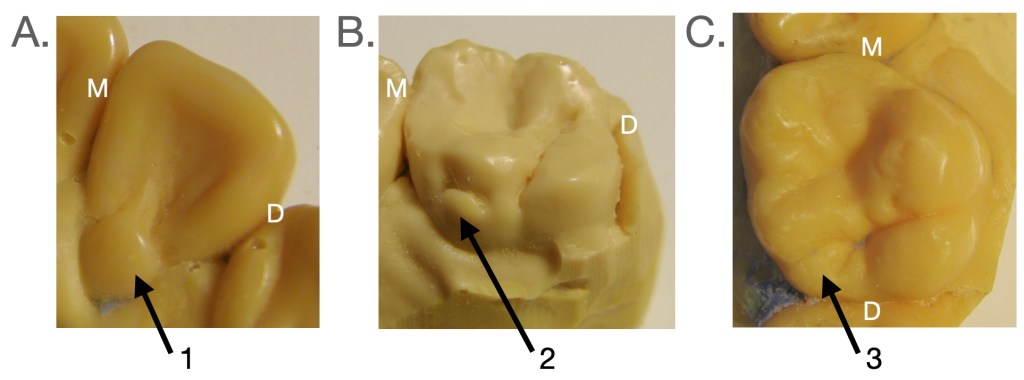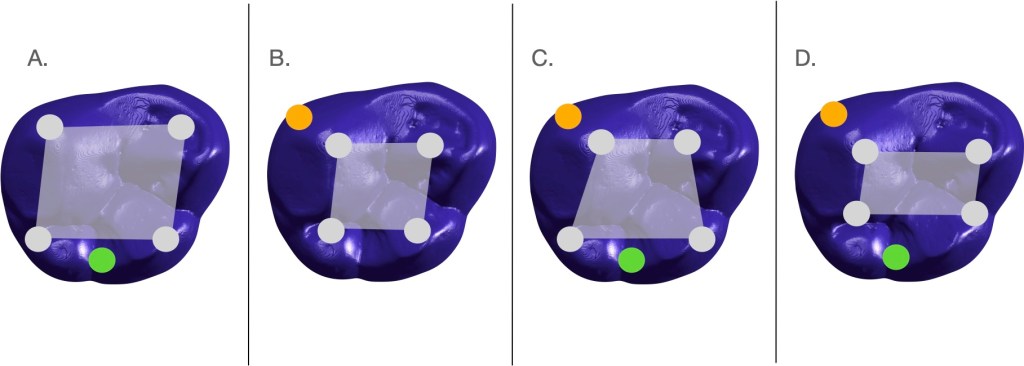Summary
Dr. Habiba Chirchir of the Ohio State University joins the show to discuss her research into the skeletal gracilization of modern humans. She’s trying to understand when and why our skeletons became less robust, and whether self-domestication may have played a role.
——————
Note: Apparently I got Dmitry Belyayev confused with Nikolai Vavilov. Both geneticists worked in the Soviet Union, but Dr. Belyayev wasn’t persecuted to the same extent as Vavilov.
Vavilov, who based his work on Mendelian genetics, ultimately died in prison for daring to go against Stalin’s favored genetic model created by Trofim Lysenko and based on Lamarckism.
Also worth noting: The contributions of Lyudmila Trut who worked with Dr. Belyayev and continued running the study after his death.
Recommendations
- Dr. Chirchir’s staff page at OSU
- Dr. Chirchir’s personal and lab website
- Assif, L., & Chirchir, H. (2024). Trabecular bone morphology in big cats reflects the complex diversity of limb use but not home range size or daily travel distance. The Anatomical Record, 307(1), 208–222. https://doi.org/10.1002/ar.25302
- H. Chirchir, T.L. Kivell, C.B. Ruff, J. Hublin, K.J. Carlson, B. Zipfel, & B.G. Richmond, Recent origin of low trabecular bone density in modern humans, Proc. Natl. Acad. Sci. U.S.A. 112 (2) 366-371, https://doi.org/10.1073/pnas.1411696112 (2015).
- Chirchir H, Ruff CB, Junno J-A, and Potts R. Low trabecular bone density in recent sedentary modern humans. Am J Phys Anthropol. 2017; 162:e23138. doi:10.1002/ajpa.23138.
- Chirchir, H. (2019), Trabecular Bone Fraction Variation in Modern Humans, Fossil Hominins and Other Primates. Anat. Rec., 302: 288-305. https://doi.org/10.1002/ar.23967
- H. Chirchir, T.L. Kivell, C.B. Ruff, J. Hublin, K.J. Carlson, B. Zipfel, & B.G. Richmond, Recent origin of low trabecular bone density in modern humans, Proc. Natl. Acad. Sci. U.S.A. 112 (2) 366-371, https://doi.org/10.1073/pnas.1411696112 (2015).
- Chirchir Habiba, Ruff Christopher, Helgen Kristofer M. and Potts Richard. 2022. Effects of reduced mobility on trabecular bone density in captive big catsR. Soc. Open Sci.9211345 http://doi.org/10.1098/rsos.211345.
- Chirchir H. Trabecular bone in domestic dogs and wolves: Implications for understanding human self-domestication. Anat Rec. 2021; 304: 31–41. https://doi.org/10.1002/ar.24510
- Richmond, Brian & Green, David & Lague, Michael & Chirchir, Habiba & Behrensmeyer, Anna & Bobe, René & Bamford, Marion & Griffin, N & Gunz, Philipp & Mbua, Emma & Merritt, S & Pobiner, Briana & Kiura, Purity & Kibunjia, Mzalendo & Harris, J & Braun, David. (2020). The upper limb of Paranthropus boisei from Ileret, Kenya. Journal of Human Evolution. 141. 102727. 10.1016/j.jhevol.2019.102727.
- Perry, T.A. and Chirchir, H. (2019), Cortical and trabecular bone density distribution in primate and felid limb epiphyses. The FASEB Journal, 33: lb150-lb150. https://doi.org/10.1096/fasebj.2019.33.1_supplement.lb150
- Cartwright C, Ragni A, Hublin JJ, Chirchir H. Trabecular bone volume fraction in Holocene and Late Pleistocene humans. J Hum Evol. 2024 May;190:103499. doi: 10.1016/j.jhevol.2024.103499. Epub 2024 Apr 3. PMID: 38569444.
- Barak MM, Lieberman DE, Hublin JJ. A Wolff in sheep’s clothing: trabecular bone adaptation in response to changes in joint loading orientation. Bone. 2011 Dec;49(6):1141-51. doi: 10.1016/j.bone.2011.08.020. Epub 2011 Aug 26. PMID: 21893221.
- Barak, Meir & Lieberman, Daniel & Hublin, Jean-Jacques. (2012). Sheep in shoes: a new experimental test of Wolff’s Law of trabecular orientation. 10.13140/RG.2.1.3689.5123.
- Barak, Meir & Hublin, Jean-Jacques & Lieberman, Daniel. (2011). Altering joint loading direction in the sheep generates trabecular orientation adjustment.
- Assif, L. and ChirChir, H. (2022), Trabecular bone morphology in felids reflects diversity in locomotor strategy but not home range size. The FASEB Journal, 36:. https://doi.org/10.1096/fasebj.2022.36.S1.R3371
- Trut, Lyudmila. Early Canid Domestication: The Farm-Fox Experiment. American Scientist. 1999 Mar; 8(2): 160.
- Dr. Christopher Ruff’s staff profile page at Johns Hopkins
- Dr. Ruff’s Google Scholar profile
- Dr. Brian Hare’s staff profile at Duke
- Dr. Hare’s personal website
- Dr. Hare’s Google Scholar profile
- Elzinga DC, Kulwicki R, Iselin S, Spence L, Capaldi A. Rapid evolution of prehistoric dogs from wolves by natural and sexual selection emerges from an agent-based model. Proc Biol Sci. 2025 Feb;292(2040):20242646. doi: 10.1098/rspb.2024.2646. Epub 2025 Feb 12. PMID: 39933588; PMCID: PMC11813586.
- Grantchester on PBS







